Essential questions and authentic tasks work together in a project-based learning environment
Get Started for FREE
Sign up with Facebook Sign up with X
I don't have a Facebook or a X account
 Your new post is loading... Your new post is loading...
 Your new post is loading... Your new post is loading...

Ophelia Catarina Torres's curator insight,
May 14, 2016 8:38 AM
How does it relate to the geographical concepts? Place: By examining the data, students are able to know the demographic characteristics of a place on different scales (local, state and national). Those characteristics included ethnic background, language spoken at home, families etc. Space: Students can explore the population distribution of an ethnic group in Australia and the ways the significance of location and spatial distribution, and ways people organise and manage spaces, in this case, Australia. Interconnection: Students are able to recognise the interconnection between the data of the ethnic background and the data of the language spoken at home. Scale: Students are able to understand how global events like migrations can affect and shape the Australian population in different scales (local, state, national) and how migrations can influence the Australian culture. Change: Students are able to identify the changes of Australian population by looking at the data from the ConCensus and compare it with similar data from the past census. What geographical inquiry skills are developed by using this source? Through this game, students are able to developed the following geographical inquiry skills: Acquiring geographical information (NSW BOSTES, 2015, p. 51) Students are able to formulate geographical questions by looking at the data of different places in Australia “to investigate and plan an inquiry” (ACHGS033, ACHGS040). For example: ➢ Why some states have more people speaking English at home than the other? ➢ Why this suburb is mostly occupied by this certain ethnicity? By using visual representations, statistical sources and reports, students are able to “collect and record relevant geographical data and information, using ethical protocols” (ACHGS034, ACHGS041) Processing geographical information (NSW BOSTES, 2015, p. 52) By using digital and spatial technologies like ConCensus, students are able “to interpret geographical data and information… and identify spatial distributions, patterns and trends, and infer relationships to draw conclusions” (ACHGS037, ACHGS044) Communicating geographical information (NSW BOSTES, 2015, p. 52) By comparing the data and discussing it in the classroom, students are able to "present findings and ideas in a range of communication forms as appropriate" (ACHGS038, ACHGS045) and as a result, helps student to construct new knowledge through “interactions with others” such as teachers and their peers. (Bobis, Mulligan & Lowrie, 2013, p. 9) Why is it chosen as a student resource? The reason why it is chosen is because geography “is a subject that deals head-on with the globally integrated world we live in and the big issues of sustainability, migration, refugees and asylum seekers, global inequalities, population and climate change” (Costello, 2010, cited in Kriewaldt, 2012, p. 11) Additionally, students need to have an understanding of Australia's demographic characteristics as it is part of the curriculum requirement, where students are required to "describe the population, explain factors that contribute to the distribution" and compare it with other countries. (Kriewaldt & Boon, 2012, p.139) Hence, it is important for students to study the demographic characteristics of place and by looking at the data provided by the ConCensus, students are able to post questions and start an inquiry in regards to people movements between countries such as the reasons why tourists or visitors would visit Australia or the reasons why immigrants and refugees would move to Australia. (Matthews & Herbert, 2008, p. 7) According to Boon, online, interactive games and simulations “provide an engaging and multisensory learning experience for students.”(Boon, 2012, p. 288) Those games and simulations often allow students to “play out” in a variety of ways, as a result improve the students’ understanding of geographical knowledge, concepts and skills. In the ConCensus case, students can be engaged with their learning when playing this game as they can explore the data by category, by state or even insert the postcode of a suburb that they are living in. As a result, “encourages students to look carefully at the factors that contributed towards a geographical phenomenon.” (Boon, 2012, p. 288) Furthermore, students can create their own census by using MyCensus and ask their peers or families to complete their census. Through activities like this will expand students’ geographical inquiry skills and develop more questions. Hence, inspire students to explore and evaluate the questions they have formulated and the data they have collected from their census. (Boon, 2012, p. 134) Reference: - ABC Splash (2014). ConCensus. Retrieved May 12, 2016, from http://concensus.splash.abc.net.au/concensus-game/ - Bobis, J., Mulligan, J., & Lowrie, T. (2013). Mathematics for children 4th Ed. Frenchs Forest, N.S.W.: Pearson Australia. - Boon, D. (2012). ICT in geography and history. In T. Taylor, C. Fahey, J. Kriewaldt & D. Boon. Place and Time. Explorations in Teaching Geography and History. Frenchs Forest: Pearson Australia - Kriewaldt, J. (2012). Why geography matters. In T. Taylor, C. Fahey, J. Kriewaldt & D. Boon. Place and Time. Explorations in Teaching Geography and History. Frenchs Forest: Pearson Australia - Kriewaldt, J., Boon, D. (2012). Geographic inquiry. In T. Taylor, C. Fahey, J. Kriewaldt & D. Boon. Place and Time. Explorations in Teaching Geography and History. Frenchs Forest: Pearson Australia - Matthews, J. A., & Herbert, D. T. (2008). Geography: A very short introduction. Oxford;New York;: Oxford University Press. - NSW Board of Studies Teaching & Educational Standards NSW. (2015). Geography K-6 syllabus. Sydney: NSW Board of Studies Teaching & Educational Standards.

Justine Yip's curator insight,
March 28, 2015 5:34 AM
This website reflects on human rights in Australia and the long struggle of Australia's indigenous peoples. It contains images of artwork commissioned by the Indigenous Electoral Participation Program (IEPP) used to encourage Indigenous people to enrol to vote for the 50th anniversary of the indigenous vote (2012). A link is also provided to the Australian Electoral Commission's Louder Than One Voice video.
Commemorating 50 years since indigenous Australians were given the right to vote at federal elections (1962 - 2012), Louder Than One Voice documents through interviews the struggle of Australia's indigenous peoples to be recognised by the government. Targeted at Indigenous Australians, it stresses the importance of having indigenous voices heard through the vote and how voting will make changes for future generations and benefit Australia as a nation.
View 'Louder Than One Voice' on YouTube: https://www.youtube.com/watch?v=B4Xu207eC70 
These sources are appropriate and "sensitive and adequate" in their treatment of Aboriginal peoples and Torres Strait Islanders and their relation and role in the electoral process and governmental issues (Queensland Curriculum and Assessment Authority, 2007, p. 1.). ATSI perspectives are clearly evident, a cross-curriculum priority of the Australian National Curriculum (ACARA, 2015), which enables students to investigate electoral issues from an indigenous viewpoint and draws attention to governmental issues ATSI peoples still face (Kleeman, 2012, pp. 24-28).
These perspectives allow students to "learn about, acknowledge and value the cultures of Aboriginal peoples and Torres Strait Islanders" (NCB, 2009, p.15 in Stevens and McDonald, 201, p. 387). By embedding indigenous perspectives, the sources are also striving towards reconciliation and "recognising, acknowledging and redressing existing racism...for the benefit of all Australians" (Stevens & McDonald, 2011, pp. 387-388).
A literacy activity could include: - Students write a hypothetical letter from the viewpoint of an Australian Indigenous person to their local government representative, highlighting issues they face such as poverty and a lack of education. This could show how citizen participation can contribute to the wider community and the importance of citizens having their voices heard at a governmental level.
References:
Australian Curriculum Assessment and Reporting Authority, (2015), Aboriginal and Torres Strait Islander Histories and Cultures, Retrieved 29 March 2015 from
Australian Electoral Commission, (2012), Louder than One Voice, Retrieved 28 March 2015 from https://www.youtube.com/watch?v=B4Xu207eC70 
Kleeman, G (2012). Towards a more inclusive curriculum: The perspectives of Aboriginal and Torres Strait islander peoples in geography curriculum documents. Geographical Education, 25(1), pp. 24-28.
Stevens, V & McDonald, H, (2011), Incorporating Aboriginal perspectives and Torres Strait Islander perspectives in SOSE. In Gilbert, R & Hoepper, B (Eds) Teaching Society and Environment (pp. 324-347), Melbourne: CENGAGE Learning
Right Now Inc. (2012), Louder than One Voice – 50 years for Indigenous vote, Retrieved 28 March 2015 from http://rightnow.org.au/artwork/louder-than-one-voice-50-years-for-indigenous-vote/

Catherine Smyth's curator insight,
March 17, 2015 8:57 PM
Drive historical inquiry with effective questions and design authentic assessment tasks when teaching history in the primary school. 
Ness Crouch's curator insight,
August 3, 2015 9:03 PM
Some nice ideas for a problem-based approach to learning about Migration. Drive the inquiry with an effective and essential question and design authentic tasks to deepen understanding.

Sonja Shuttleworth's curator insight,
April 13, 2014 4:09 AM
This is an excellent webquest that aligns closely with ideas of heritage, identity and migration explored by Stage 2 HSIE students in NSW. The objective of this webquest is to ‘explore the journey undertaken by migrant families and come to understand their contributions to Australia.’ (http://jesselda-webquest.wikispaces.com/Introduction)
WEBQUESTS
A webquest often takes the form of a mystery or problem for students to solve online. It generally features a task for students to complete using pre-provided links to information.
Lamb (2004, p. 38) has described a webquest as ‘a particular type of inquiry-based activity that asks students to use Web-based resources and tools to transform what they are learning into meaningful understandings and real-world projects.’
Webquests also have the following benefits: - most or all of the information is found on pre-selected websites - learners do not have to spend substantial time using search tools - web-based information is used to address high-level questions. (Lamb, 2004, p. 38)
OVERVIEW
The webquest sets five tasks for completion under the following headings: - The history of immigration in Australia - Why did/do people migrate to Australia? - What are the contributions/impacts of immigration in Australia? - Preparation for the interview [with someone who has migrated to Australia from another country] - The interview
In completing these tasks, students hear narratives told by migrants to Australia, and identify occupations, skills and culinary traditions migrants have brought with them.
Students carry out the following exercises in their journey through the webquest: - define terms - create a timeline, survey, graph and mindmap - collaborate with classmates - conduct an interview.
MODIFICATION This webquest has been developed for Victorian primary school students in year 4, and makes excellent use of local resources from Museum Victoria. The content is relevant to Stage 2 (year 3 and 4) students in NSW, however some of the activities may need to be modified for younger students – for instance, tasks 4 and 5 might be changed to ask students to formulate interview questions, rather than conduct the interview itself.
ASSESSMENT The five tasks in the webquest are designed to stand as assessment tasks, and an evaluation rubric is provided: http://jesselda-webquest.wikispaces.com/Evaluation
RESOURCES The webquest author (unfortunately uncredited) has created a comprehensive resources and links page http://jesselda-webquest.wikispaces.com/Credits
The Teacher’s Page (http://jesselda-webquest.wikispaces.com/Teachers+Page) features teacher resources and outlines links to the Victorian curriculum.
REFERENCES Lamb, A. (2004). WebQuests. School Library Media Activities Monthly 21 (2), p. 38 |

Christina Vuong's curator insight,
May 31, 2018 7:06 AM
This interactive resource is suitable for Stage 3 students undertaking an historical inquiry on migration as it depicts a story through the images, audio and text, of the hardships and losses many Vietnamese refugees endured when fleeing their home country after the Vietnam War. Through engaging with this resource, students learn the historical concept of 'empathetic understanding' (NESA, 2016a) as they gain a deeper understanding of the "motivation and behaviour of people in the past" (Taylor & Young, 2007, p.19), the perilous journey undertaken, and the losses and suffering endured by the 'boat people'. Teaching and learning suggestions: - Hot Seat Activity: One student can sit in the 'hot seat' at the front of the class and play the role of Mai (the narrator). The rest of the class will ask Mai questions about her reasons for migrating, the journey by boat, and how her life has been since arriving in Australia. Before asking questions, the teacher should ask some first. Through this activity, students practise the skill of posing questions to "inform an historical inquiry" (NESA, 2016b), which the National Research Council asserts is important and is strengthened by first having the teacher model it (2004, p.20). Other students can sit in the hot seat and play the role of others in the story, such as Truong and Quyen. - After reading through the graphic novel, students can demonstrate their understanding of the historical matter by writing diary entries in the perspective of one of the people depicted in the text (e.g. Mai (the narrator), Quyen or Truong). Guide students through this writing task by providing questions such as, "Why did you leave Vietnam?", "What did you see, smell, hear, feel, eat on the boat?", "How did you feel when you arrived in Australia?". Through this learning activity, students also use the skill "develop historical texts, particularly narratives and descriptions, which incorporate source material" (NESA, 2016b). References NESA. (2016a). Continuum of concepts in history K-10. Retrieved May 27, 2018, from https://syllabus.nesa.nsw.edu.au/hsie/history-k10/continuum-of-concepts/ ; NESA. (2016b). Continuum of skills in history K-10. Retrieved May 27, from, https://syllabus.nesa.nsw.edu.au/hsie/history-k10/continuum-of-skills/ Taylor, T., & Young, C. (2007). Making History: A Guide for the Teaching and Learning of History in Australian Schools (Canberra: Department of Education, Science and Training). 2

Claire Reinthal's curator insight,
April 20, 2015 6:21 AM
Description of what is on this site:
This fascinating resource includes pictures and documents originating from the days of the First Fleet. These give students an idea of the British community who were settling in Sydney as well as the environment they inhabited. By extension, this also gives the students insight into the great changes in community and environment which have occurred since then.
A teaching idea and idea for an assessment task:
After some instruction on the forms of newspaper writing, children can be encouraged to consider all the aspects of Australia Day as they write their own articles, newspaper style, for their summative assessment task. The resource at this link http://www.enchantedlearning.com/newspaper/ could help students understand about newspaper writing styles. Perhaps these can be published in the school newsletter. Students should be encouraged to report on the changes in community and family life and the effects of these on individuals, groups and the environment from 'the first Australia Day', January 26, 1788, until now.
A literacy or numeracy strategy:
The above activity would cover outcome EN2-2A from the English Syllabus, 'plans, composes and reviews' 'texts that are more demanding'.
References:
Enchanted Learning (2015) Make a Classroom Newspaper. Retrieved April 20, 2015, from http://www.enchantedlearning.com/newspaper/
State Library of NSW (2015). The First Australia Day. Retrieved April 6, 2015, from http://www.sl.nsw.gov.au/discover_collections/history_nation/terra_australis/education/australia_day/index.html

Sonja Shuttleworth's curator insight,
April 13, 2014 5:21 AM
World Vision Australia has a range of school resources linked to its magazine 'Get Connected'. The resources related to migration and asylum seekers are notable for their global perspective.
The migration lesson plan is a series of six lessons designed to accompany the issue of 'Get Connected' focusing on migration. The lesson plan covers the following aspects of migration: - Australia’s immigration story - Push and pull factors - Types of migration - Asylum seekers and refugees - The migrant experience - The role of government and NGOs.
The magazine itself includes a number of personal narratives in the form of written case studies, and the lesson plan links to digital migration stories, part of acmi’s digital storytelling project: http://generator.acmi.net.au/education-themes
MODIFICATION The migration lesson plan does not specify a target stage or age group, and seem to be geared towards upper primary and lower secondary students.
This means that some of the content and activities would need to be modified for Stage 2 students. This could be done by: - limiting the amount of independent research that students are expected to complete for activities - supplying the information instead, either as printouts or links to websites.
Lesson 6, ‘the role of government and NGOs’, may be more suitable for Stage 3 students, who look at ‘structures, roles, responsibilities and decision-making processes of State and federal governments’ (SSS3.8)
However, many of the activities in the lesson plan are already suitable for Stage 2 students. These include: - creating a class graph or chart showing the regions that families come from - making a poster of push-pull factors - examining and interpreting maps.
RESOURCES Although the lesson plan is free to download, the magazine itself is not available to download. It can be ordered from World Vision for $9.90 per copy. http://www.worldvision.com.au/Libraries/School_Resources/Get_Connected_Order_Form_2012.pdf
SUPPLEMENTARY MATERIALS Asylum seekers fact sheet http://www.worldvision.com.au/Libraries/School_Resources/Asylum_seekers.pdf
The refugee journey http://www.worldvision.com.au/Libraries/School_Resources/The_refugee_journey.pdf
LINKS TO OTHER SYLLABUS OUTCOMES Stage 2 teachers could consider using texts with personal narratives to link this global perspective on migration to the English syllabus. Suggested texts include:
The Little Refugee, by Anh Do and Suzanne Do, illustrated by Bruce Whatley - Anh Do's story about his family's escape from war-torn Vietnam and his childhood in Australia, told especially for children http://www.allenandunwin.com/default.aspx?page=94&book=9781742378329 http://www.allenandunwin.com/_uploads/BookPdf/TeachersNotes/9781742378329.pdf
Harmony and understanding http://www.blake.com.au/Harmony-and-Understanding-s/773.htm A nonfiction series that fosters understanding, inclusion, tolerance and respect for the multicultural experience. Created in partnership with the Australian Multicultural Foundation
World Vision Australia and the Primary English Teaching Association Australia have also developed a unit of work called ‘Global people’ http://www.globalwords.edu.au/units/Refugees_UPY6_html/documents/GlobalWords_Refugees_UPY6print.pdf
The ‘Global people’ unit of work is based on the following texts: ‘Ziba Came on a Boat’, by Liz Lofthouse, illustrated by Robert Ingpen ‘Mahtab’s Story, by Libby Gleeson ‘Parvana’, by Deborah Ellis ‘Boy Overboard’, by Morris Gleitzman |







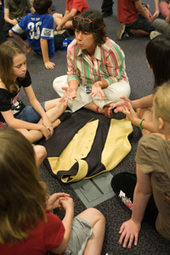

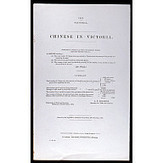
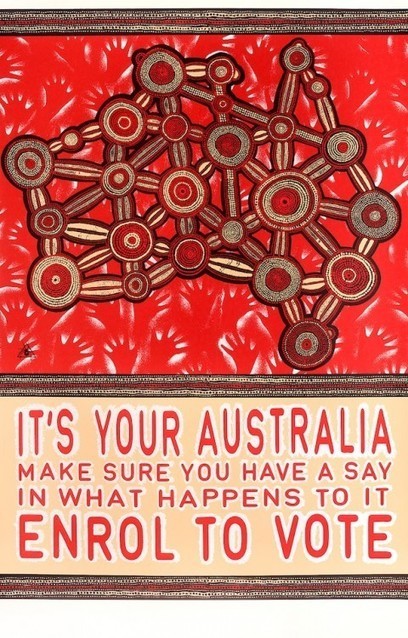


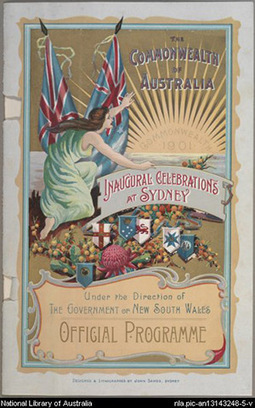

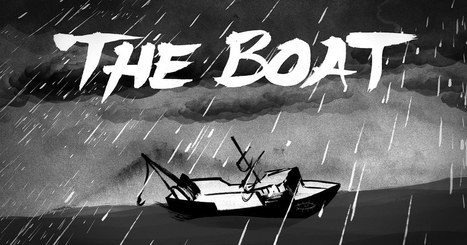


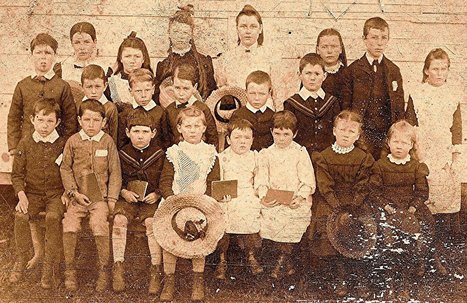

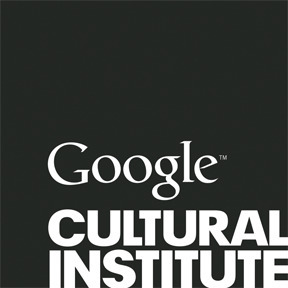

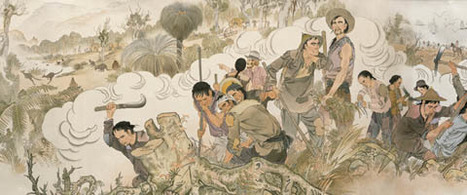

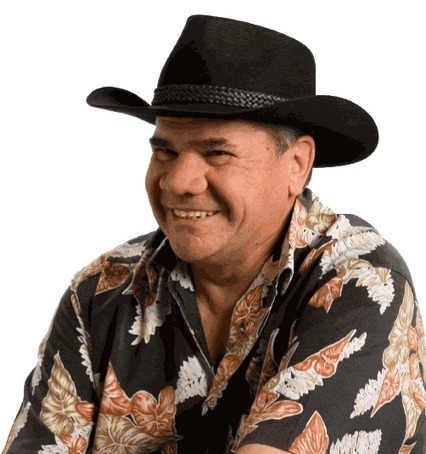
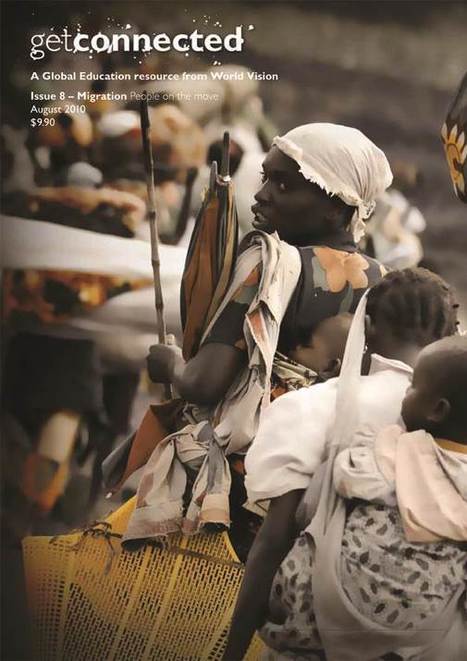





Drive historical inquiry with effective questions and design authentic assessment tasks when teaching history in the primary school.
Some nice ideas for a problem-based approach to learning about Migration. Drive the inquiry with an effective and essential question and design authentic tasks to deepen understanding.